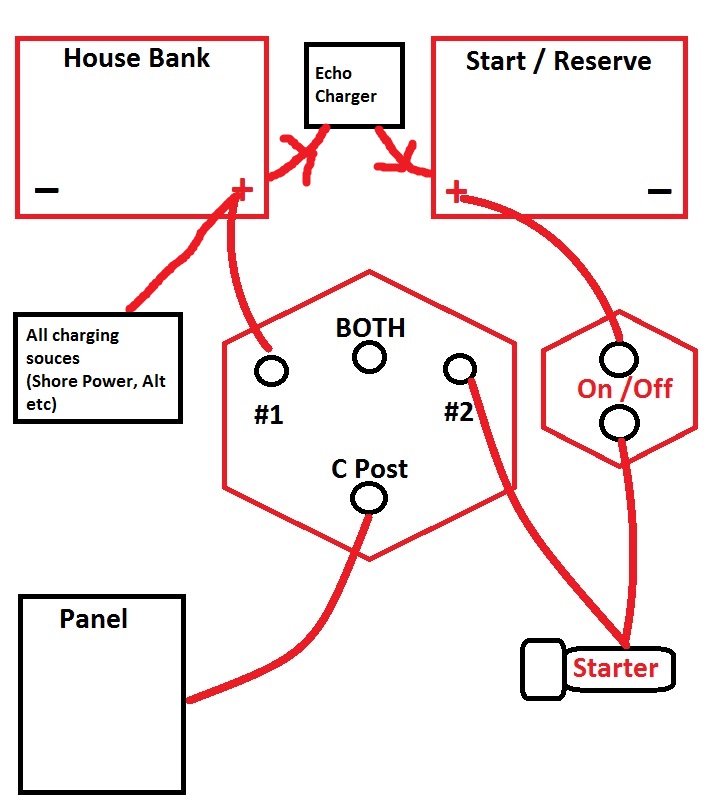The first step to installing the DC system was working out the physical placement of everything – batteries are large and potentially dangerous, battery cable is large and expensive.
Here is a diagram of the boat
The original battery location was under the port lazarette, tucked behind the icebox. The previous owner moved it at some point to the location marked above – to a compartment under the starboard sofa.
There were a couple of problems with this new location
– not much airflow
– the plumbing for the shower ran straight through the compartment
– charging the batteries sometimes gives off corrosive gases
These are all reasons why you wouldn’t want the batteries inside.
I decided to move them back to the original location, in part because the original wood stands were still there.
With the location of the batteries decided, the next step was to work out how to wire them.
I decided to use this wiring diagram, created by Maine Sail
There is a separate dedicated starting battery, which starts the engine but is isolated from the main bank (if a battery dies, if you combine it with a good battery, you kill both batteries). In normally opertaion the switches would be ON and #1 position.
This also allows a backup battery
– If the starter battery dies, I can use the house bank to start the engine, by setting the ON/OFF switch to OFF, and the main switch to BOTH
– If the house bank dies and I need emergency power, I can run off the start battery by setting ON and #2.
All the charging input goes to the house bank, which is used for the house things. The house battery is charged by a nifty thing called an echo charger – it detects when the house bank is full and bleeds current in one direction to the starter, until that is also full.
With all that planned out, the next stage was to order the cables and start wiring!


Hey Matt,
what is the reason you decided to have the echo charger give the house batteries pereference over the starter? Not meant as criticism but purely curious, as I would probably have chosen the other way round.
Hey,
Maine Sail explains it better than I can here. http://forums.sailboatowners.com/index.php?threads/1-both-2-off-switches-thoughts-musings.137615/
Basically, the starter battery has very little current drawn from it, even on extended starts while the house battery runs everything. The echo charger can only charge the ‘2nd’ source with 15 amps maximum, so that will charge the starter just fine.
I’m curious why you didn’t run wire from starter battery to #2 instead of starter to #2.
Hi Brian, couple of years since I set this up but the idea was to keep the batteries completely separated so I wouldn’t accidently combine them, why still having the ability to run the house loads/starter off either in case of an emergency. The on/off switch on the starter battery is important to that